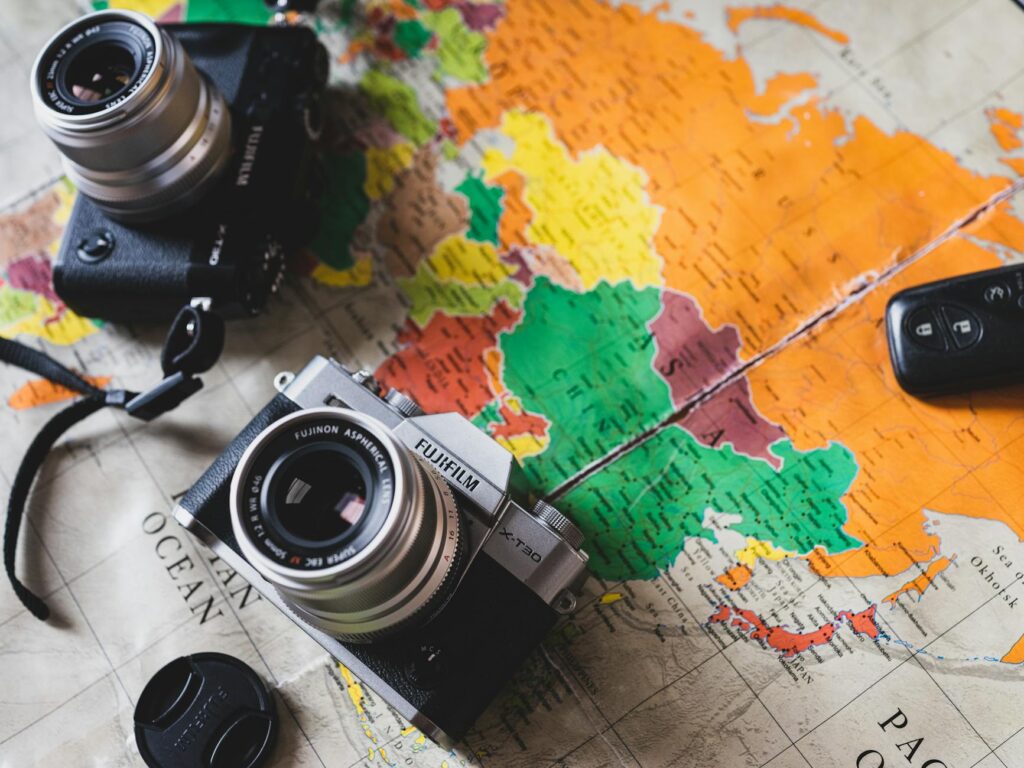Optics on the Go
Taking your optics along on your adventures can be incredibly rewarding, but it’s crucial to make the right selections to enhance your experience without weighing you down. Whether you’re capturing the majesty of a mountain range or snapping candid shots of city life, the gear you choose plays a pivotal role.
Camera Gear Selection
When selecting camera gear for travel, consider the type of trip you’re embarking on. Is it a leisurely resort stay, an action-packed safari, or perhaps a rugged backpacking journey? The destination and activities will dictate the type of camera and lenses that will best suit your needs. Mirrorless cameras, for instance, are often recommended for their compact size and reduced weight compared to traditional DSLRs, which is a significant advantage when space is at a premium (Erin Outdoors).
For those starting in travel photography, the Sony a6000 with a 16-50mm lens is a lightweight and capable option, weighing only one pound. It’s easy to pack and won’t add much bulk to your bag. If you’re looking for a step up in full-frame performance with relatively light weight, consider the Sony a7III paired with a 24-105mm lens. Weighing in at 2.89lbs, it offers high performance without being overly cumbersome.
Lens Choices for Travel
Your lens selection is as crucial as the camera body itself, especially when traveling with optics. For most travel scenarios, a versatile zoom lens, like a 24-70mm or 24-105mm, can be invaluable. It covers a broad range of focal lengths to capture landscapes and portraits alike.
However, if your travels include wildlife observation, such as on a safari, you’ll likely need a telephoto lens to bring distant subjects into clear view. A lens starting at 200mm is advisable, but for the best results, aim for 400-600mm to capture wildlife with clarity and detail (Erin Outdoors).
| Lens Type | Focal Length | Weight | Best Use |
|---|---|---|---|
| Standard Zoom | 24-105mm | Varies | General Travel |
| Telephoto | 400-600mm | Varies | Wildlife/Safari |
Remember, the choice of optics can make or break your travel photography experience. A well-thought-out selection can help you bring back stunning images that capture the essence of your journey. For more information on how to maximize the potential of your optics, explore our guides on magnification power in scopes and light transmission in optics.
Fiber Optics Insights
As you delve into the world of optics, it’s fascinating to discover how fiber optics technology is not just about magnification power in scopes or choosing a rifle scope for your outdoor adventures. Fiber optics play a pivotal role in various industries, including aviation and telecommunications. Let’s explore how this technology is advancing aviation and transforming data transmission.
Advancements in Aviation
In the aviation sector, fiber optics have been a game-changer. Airlines are increasingly exploring fiber optics to replace traditional copper-based systems in aircraft. This shift allows for a stronger and more reliable connection, which is essential for in-flight entertainment applications like seat-back screens. Especially when multiple passengers are accessing a vast database of in-flight entertainment (IFE) and digital services simultaneously, the robustness of fiber optics ensures that everyone has a smooth user experience. Rosen Aviation, a pioneer in upgrading cabin entertainment technology, has been enhancing the passenger and crew experience on aircraft for over 40 years by providing features such as streaming movies, real-time flight information, interactive maps, and high-speed, high-quality IFE.
Transforming Data Transmission
When it comes to data transmission, fiber optics are at the forefront of innovation. These slender, flexible glass fibers transform data into light signals, enabling data to be transmitted at the speed of light. The light bounces within the walls of the cable as it travels through the core, which allows for the data to travel long distances without any degradation in signal quality. This aspect is crucial for maintaining high-speed internet connections and ensuring that communication tools like video conferencing, VoIP, and cloud-based applications function seamlessly and in real-time, thereby connecting people and businesses across the globe (STL Tech).
Fiber optic technology has also greatly enhanced the entertainment experience by providing high-definition channels and improved picture quality in cable and satellite television systems, as well as in home theatre setups. Whether you’re traveling with optics or setting up your entertainment system at home, understanding the impact of fiber optics can give you a deeper appreciation for the technology that powers our modern world. If you’re curious about how optics are utilized in various practical applications, such as military-grade optics, top binoculars for birdwatching, or even emerging optics brands, exploring the advancements in fiber optics provides valuable context.

